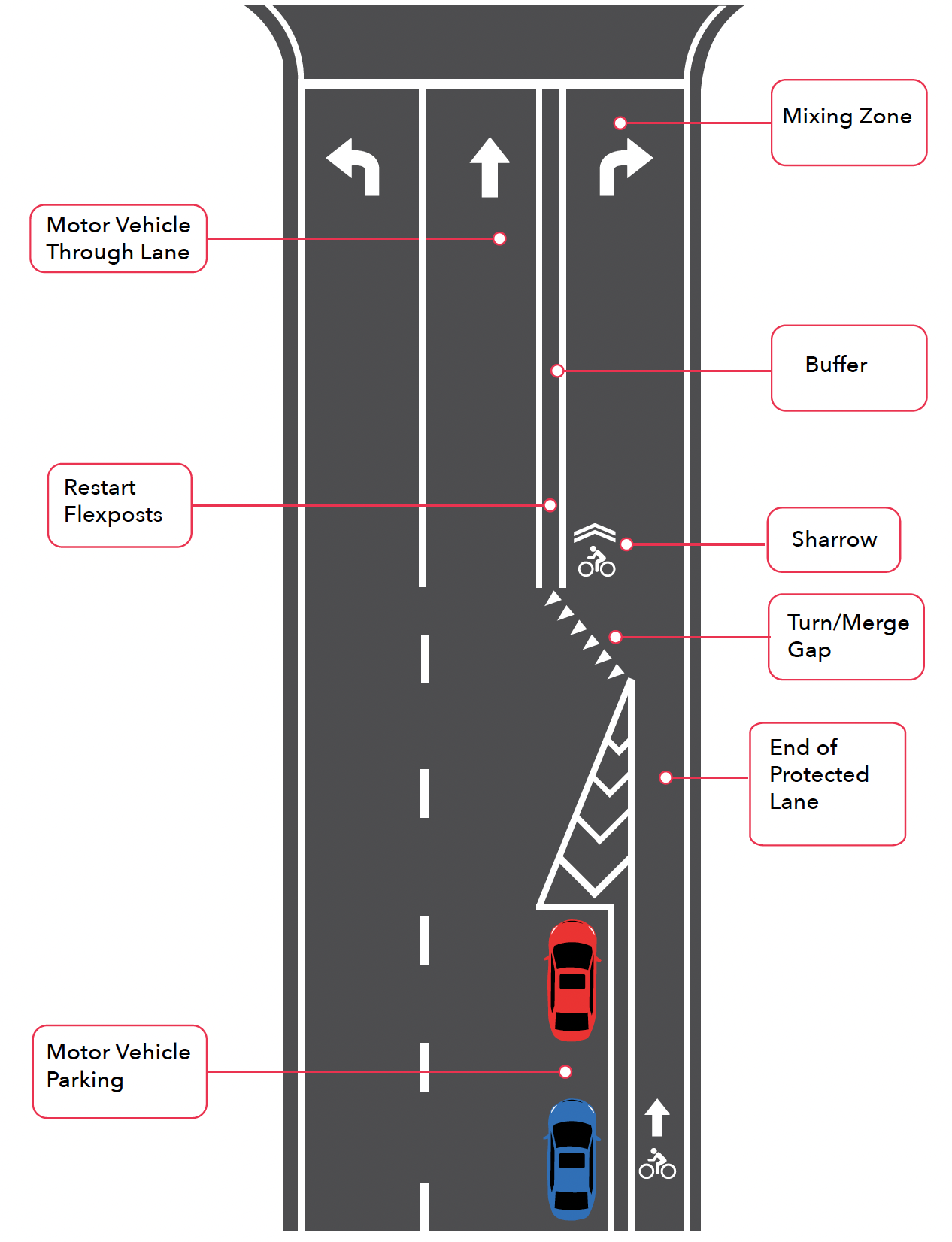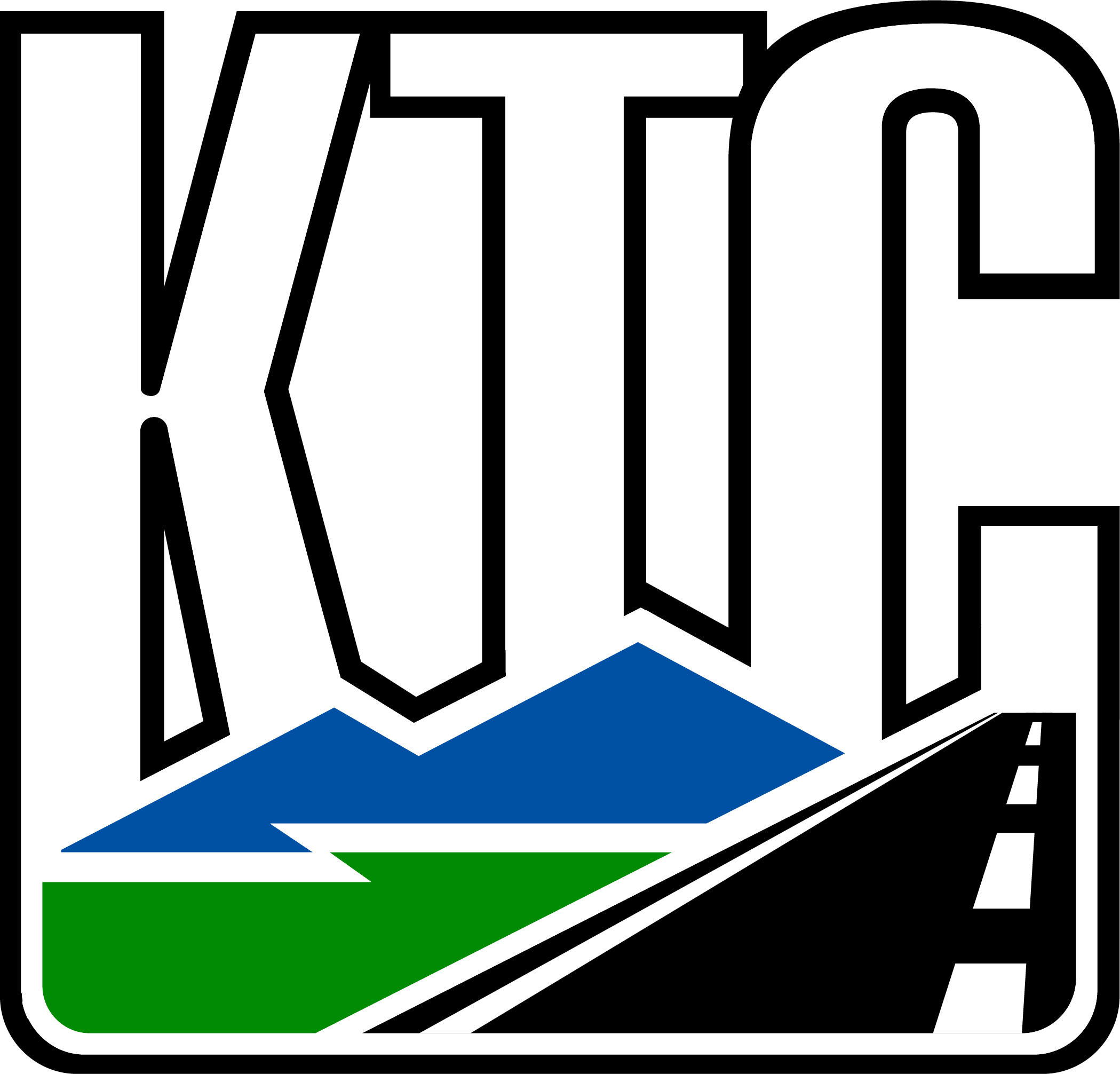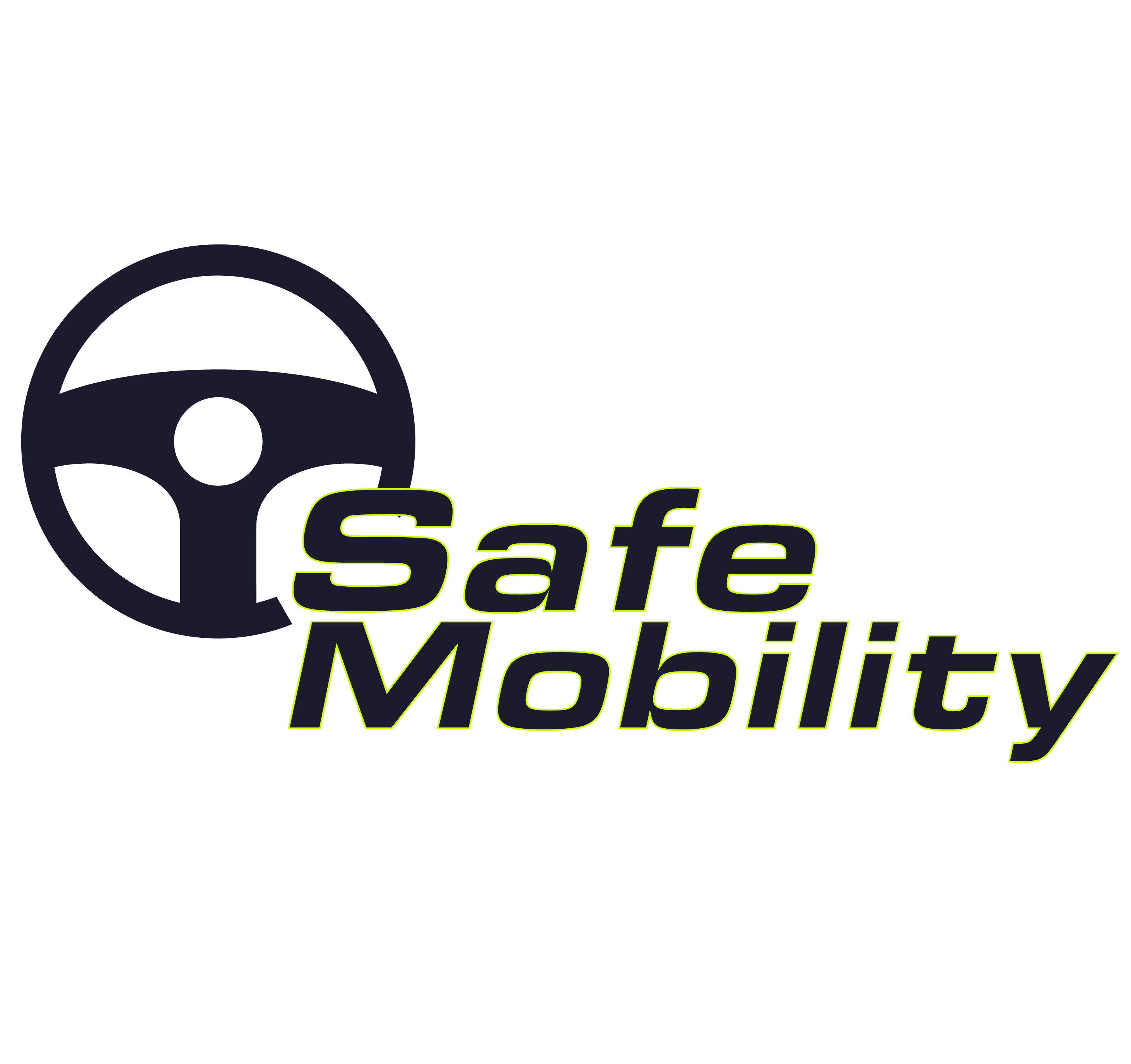- When designing intersections, it is important to attend to potential conflicts between all users — not just motorists.
- The growing number of large vehicles on roads can imperil bicyclists. Larger vehicles, infotainment systems, and eye heights positioned far off the ground increase the likelihood that drivers will fail to detect bicyclists. Several design options are available to improve bicyclist visibility (Figure 29.1).
-
- Dedicated bicycle through lanes encourage more predictable motorist and bicyclist movements and shape motorist expectations about merging bicyclists.
- Use dotted bicycle lane extensions to guide bicyclists through long, undefined areas at intersections and to denote where motorists can safely merge into the turning lane.
- Use position sharrows to paint an alignment that offers a practical path for bicycle travel.
- Apply sharrows to increase operating space for bicyclists, reduce sidewalk riding, increase motorist awareness of bicyclists, and keep adequate space between bicycles and parked vehicles.
- Use mixing zone designs to evenly split the onus of merging between bicyclists and motorists, encouraging motorists to yield to bicyclists and lower their speeds in turn lanes.
- Keep corner radii at intersections as small as practical. Larger radii facilitate quicker vehicle turning speeds, which can introduce merging conflicts between motorists and biyclists.
-

CONTACT:
Chris VanDyke
Research Scientist | Program Manager
chrisvandyke@uky.edu


